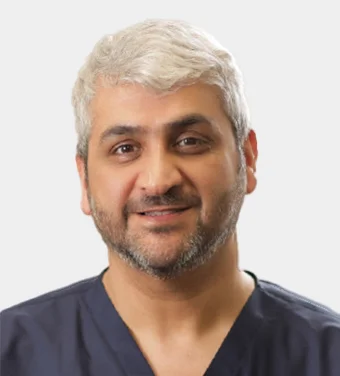
Experience a ground-breaking approach to spinal decompression at IBS Hospital. Our minimally invasive techniques offer precision and quicker recovery, providing relief from debilitating back pain.
What is Minimally Invasive Spinal Decompression ?
Minimally invasive spine surgery (MISS) uses advanced technology and innovative techniques to treat back and neck pain caused by various spinal disorders. It minimizes soft tissue damage and is generally less risky and less invasive compared to traditional open spine surgery. MISS typically reduces hospital stay by half. For instance, endoscopic discectomy surgeries are usually same-day procedures, with patients going home shortly after the surgery on the same day.
What factors determine the need for Minimally Invasive Spinal Decompression?
- The presence of back and neck pain caused by a variety of spinal disorders.
- The suitability of MISS over traditional open spine surgery to minimize soft tissue damage and reduce risk.
What does the Minimally Invasive Spinal Decompression involve, and what can patients expect during recovery?
Minimally Invasive Spinal Decompression involves using advanced technology and innovative techniques to treat back and neck pain caused by various spinal disorders. This approach minimizes soft tissue damage and is generally less risky and less invasive compared to traditional open spine surgery.
During recovery, patients can expect a decreased hospital stay, typically by one-half compared to traditional surgery. For instance, typical endoscopic discectomy surgeries, which are a form of minimally invasive spine surgery, are performed on the same day, allowing patients to go home shortly after the surgery on the same day. In the case of more complex procedures like lumbar fusion surgery, the recovery in the hospital may extend to 2 to 3 days before going home.
What is the process / patient journey for undergoing Minimally Invasive Spinal Decompression at IBS Hospital?
Day 1:
You will be admitted to the hospital, where you’ll receive anesthesia and undergo the surgery. After the procedure, you will be moved to a regular hospital room for recovery.
Day 2:
There may be a bit of pain for which you will be given analgesics. You shall then be discharged with medical and follow up advice.
What is the post-surgery follow-up and recovery timeline?
You may be advised to see the surgeon a week after surgery for stitch removal. Follow-ups are important to ensure proper healing. Initially, you might experience some soreness and pain, depending on the type of surgery performed. Bruising around the area is not uncommon.
Our team of experts that make it possible
Meet the team of highly specialised and experienced neurosurgeons, neurologists, orthopedicians, and other experts in the field of neurology and spine care. Our team is dedicated to providing personalised and compassionate care to each patient, with the goal of helping them achieve the best possible outcomes.
IBS Hospital Empowers Your Treatment with Cutting-edge Technology
We continuously incorporate cutting-edge technologies from around the world into our offerings, such as a surgical system that allows for precise and confident complex procedures. We use magnetic stimulation to treat certain neurological conditions and create personalised brain maps for tailored treatment plans. Nerve monitoring during surgeries ensures the nervous system is not compromised, and a robotic exoskeleton aids in mobility issues. Our goal at IBS Hospital is to provide the best care possible, utilising the latest and most innovative technologies available.




